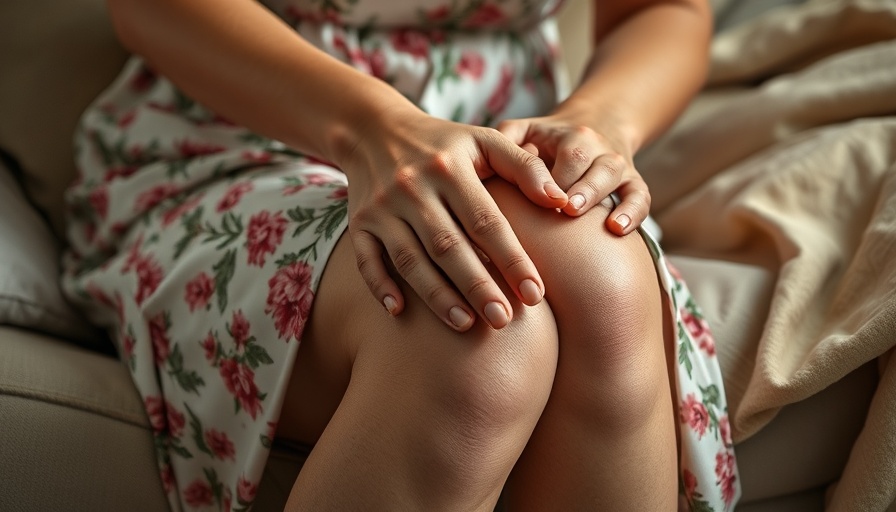
Understanding Osteoarthritis and Its Challenges
Osteoarthritis (OA) is a degenerative joint disease that most commonly affects the knees, leading to symptoms such as pain, stiffness, and decreased mobility. Often categorized as a wear-and-tear condition, it results from the breakdown of cartilage protecting the joints. As the cartilage wears away, bones can rub against each other, leading to inflammation and pain that complicate everyday activities—especially walking.
Gait Retraining: A Novel Approach to Pain Management
Recent research highlights how a minor adjustment in walking style, specifically through gait retraining, can mitigate the pain associated with knee OA. A study involving 68 adults aged around 64 with confirmed medial knee OA found that altering the angle of a person's feet while walking—often allowing them to find their 'best foot angle'—can significantly reduce pressure on affected knee joints. This, in turn, can alleviate pain and possibly slow down the disease's progression, as well as delay the need for surgical interventions.
How Gait Changes Affect Cartilage Health
The medial compartment of the knee is typically the first to show deterioration during OA. Walking mechanics play a crucial role in either accelerating or decelerating joint loading. By adjusting the way one walks, researchers were able to show that individuals could experience a decrease in joint strain, which is vital for preserving cartilage health. This method presents an easy and cost-effective alternative to pharmaceutical treatments, which often come with unwanted side effects.
Breaking Down the Study and Its Outcomes
The study participants underwent gait retraining exercises aimed at adjusting their foot positioning slightly—either inward or outward. The results showed measurable reductions in pain during and after walking, with many participants reporting enhanced overall quality of life. This innovative approach highlights the potential of physical training and rehabilitation strategies that focus on individualized assessment and treatment, tapping into the growing field of personalized medicine.
The Future of Non-Drug Treatments for Osteoarthritis
As OA impacts millions and poses a significant burden on healthcare systems, the implications of this research are profound. It opens avenues for broader applications of non-drug treatments, which could transform how healthcare providers approach knee pain management. Given the evidence supporting gait retraining, further studies could expand this approach to other joint issues as well.
The Accessibility of Gait Retraining
One of the most exciting aspects of gait retraining is its accessibility. Patients can incorporate these simple changes into their rehabilitation routines without needing any expensive equipment. Moreover, many healthcare practitioners can be trained to offer gait retraining sessions, making this a feasible option for more patients suffering from knee OA. Incorporating simple gait analysis tools or apps may aid in patient education by giving individuals more control over their treatment pathways.
Seeking Professional Guidance
While gait retraining shows great promise, it's essential for patients to consult with healthcare providers to ensure tailored approaches are used. The importance of professional oversight cannot be overstated, as each individual's condition varies and factors such as age, weight, and history of joint issues must be taken into account.
Conclusion: Embracing Change for Better Health
The insights from this study pave the way for innovative, non-invasive approaches to managing osteoarthritis. In this fast-evolving field, patients have more options than ever to influence their treatment journeys positively. Understanding and applying gait retraining could be a game-changer for millions suffering from knee pain, leading to improved mobility and quality of life. Everyone deserves to live pain-free and embrace activities they love. Therefore, consider discussing gait retraining with your healthcare provider as a potential avenue for relief.
 Add Row
Add Row  Add
Add 




Write A Comment